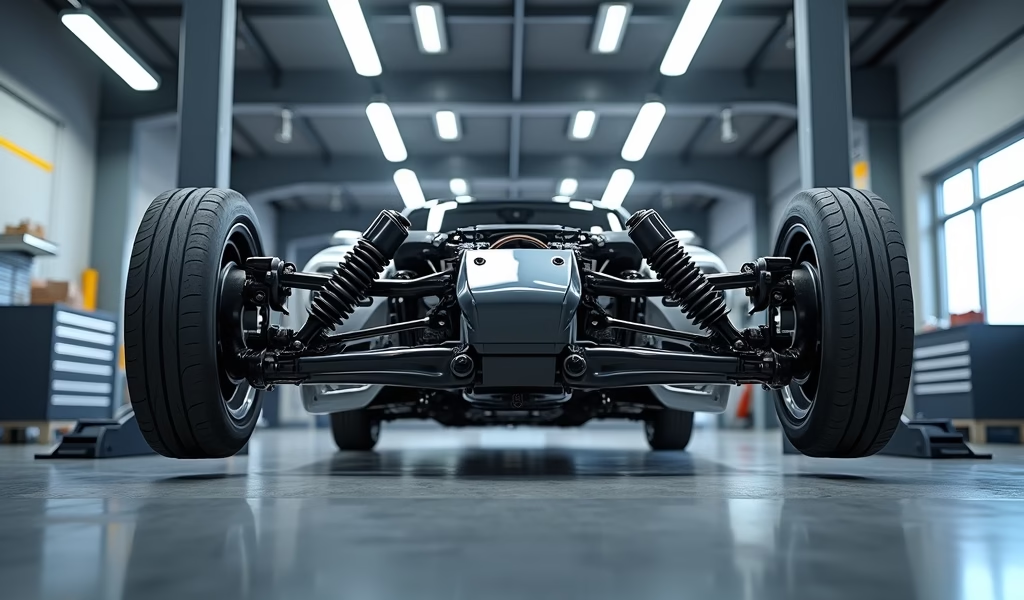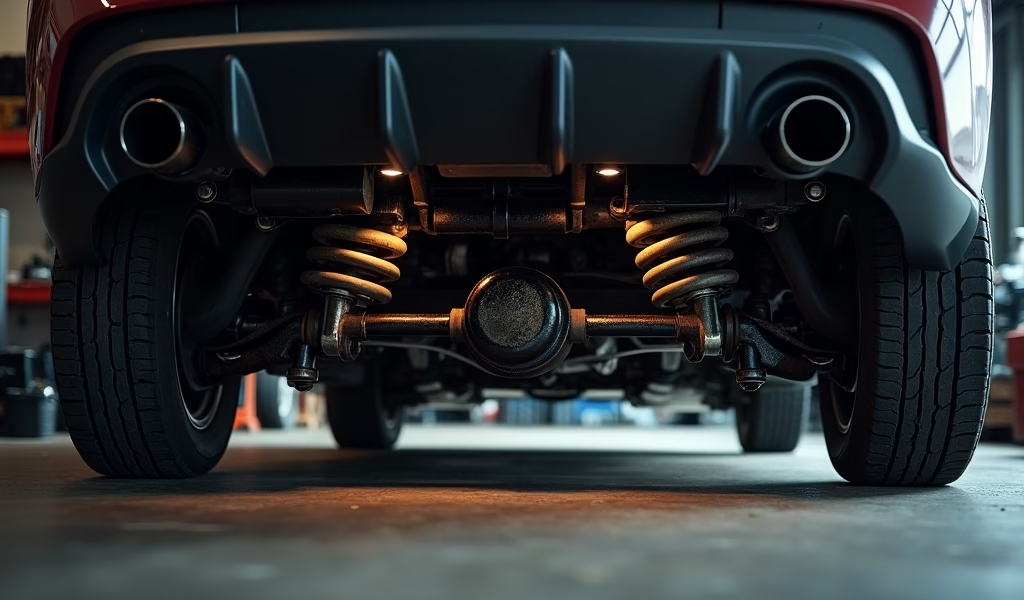Overview
This guide explains how to properly align multi-link rear suspension systems for better handling and tire longevity, covering necessary tools, warning signs of misalignment, step-by-step adjustment procedures, and troubleshooting tips. Regular maintenance checks and proper alignment techniques are essential for preserving suspension performance, with alignment recommended annually or after significant impacts.
Table of Contents
- Understanding Multi-Link Rear Suspension Systems
- Signs Your Multi-Link Suspension Needs Alignment
- Tools and Equipment for DIY Alignment
- Preparation Steps Before Alignment
- Step-by-Step Alignment Procedure
- Common Challenges and Troubleshooting
- Maintenance Tips for Longevity
- Conclusion
- Frequently Asked Questions
Understanding Multi-Link Rear Suspension Systems
Multi-link rear suspension systems represent the pinnacle of automotive engineering when it comes to balancing ride comfort and handling precision. Unlike simpler suspension designs, these complex systems use multiple control arms and linkages to allow each wheel to move independently in response to road conditions. This sophisticated design is what gives your vehicle that planted feel when cornering while still soaking up bumps like they’re barely there.
I’ve worked on countless vehicles with this setup, and I can tell you that when properly aligned, there’s nothing quite like a multi-link suspension for delivering that perfect balance between comfort and performance. Think of each component as a musician in an orchestra – they all need to be in perfect harmony for the symphony to sound right.
The beauty of multi-link systems lies in how they control wheel movement in three dimensions. Each link has a specific job: some control camber (the inward or outward tilt of the wheels), others manage toe (whether your wheels point inward or outward), and some handle castor (which affects steering feel and stability). When these settings drift out of spec, your vehicle’s handling, tire wear, and overall safety can be compromised.
Most modern rear multi-link suspensions feature anywhere from three to five links per wheel, often incorporating a combination of lateral arms, trailing arms, and sometimes even a toe control link. This complexity allows engineers to fine-tune how the wheel moves through its travel, but it also means more potential adjustment points when alignment issues arise.
Signs Your Multi-Link Suspension Needs Alignment
Your car has ways of telling you when its multi-link rear suspension alignment is off – you just need to know what to listen for and feel. The most obvious sign is uneven tire wear. Take a look at your rear tires – if you notice wear predominantly on the inner or outer edges, that’s your car waving a red flag about camber issues. If the wear pattern looks like sawtooth edges across the tire, that’s typically a toe alignment problem.
Behind the wheel, you might notice your vehicle pulling to one side even on a flat road. This drift isn’t just annoying – it’s your suspension crying out for attention. Another telltale sign is when your steering wheel sits off-center when driving straight. Your car should track true without you having to make constant corrections.
Handling quirks can also signal alignment problems. If your car feels unstable during lane changes or exhibits unusual behavior when cornering, the multi-link geometry might be compromised. Some folks also report a floating or wandering sensation at highway speeds – that’s not normal, and it’s definitely not safe.
Pay attention to any new vibrations or noises too. While not always directly related to alignment, they often accompany suspension issues. Particularly listen for clunks or knocks when going over bumps – these could indicate worn bushings or ball joints that affect your toe alignment specifications, which need addressing before a proper alignment can be performed.

Tools and Equipment for DIY Alignment
Tackling a multi-link rear suspension alignment at home isn’t for the faint of heart, but with the right tools, it’s definitely doable. First, you’ll need a good set of alignment tools – at minimum, a camber gauge and a toe plate or string system for measuring toe angles. Digital versions are more accurate, but the traditional bubble-type gauges can work if you’re careful.
You won’t get far without proper lifting equipment. A quality floor jack and jack stands rated for your vehicle’s weight are non-negotiable for safety. Never, and I mean never, work under a car supported only by a jack – that’s just asking for trouble. Some folks prefer to use ramps for alignment work since they provide a level surface, but make sure they’re rated for your vehicle.
For adjustments, you’ll need a comprehensive socket set and wrenches. Many multi-link systems require specialized wrenches with thin walls to access tight spaces. A breaker bar or impact wrench can help with stubborn bolts, but be careful not to apply too much torque to aluminum components. A camber adjustment bolt kit might be necessary if your vehicle doesn’t have factory adjustment provisions.
Don’t forget about measurement and reference tools. A tape measure, chalk or marker for reference lines, and a notebook to record your readings are essential. Many DIYers overlook the importance of a level working surface – if your garage floor slopes (most do), you’ll need to compensate for this in your measurements or find a level spot to work.
According to Car and Driver’s maintenance experts, having the factory service manual for your specific vehicle model is perhaps the most important “tool” of all. It contains the exact specifications and procedures tailored to your suspension design.
Preparation Steps Before Alignment
Before diving into the actual alignment, proper preparation can save you hours of frustration. Start by giving your multi-link suspension a thorough inspection. Look for any obvious damage, worn bushings, or loose components. There’s no point aligning a suspension with worn parts – it’ll just go out of alignment again quickly. Pay special attention to control arm bushings as these are common failure points that affect alignment stability.
Check your tire pressure and adjust to the manufacturer’s recommendations. Uneven or incorrect tire pressure can throw off your alignment readings and give you false results. While you’re at it, examine your tires for unusual wear patterns – they tell the story of your current alignment state and can help guide your adjustments.
Now’s also the time to ensure your vehicle is carrying its typical load. If you normally drive with cargo or passengers, simulate this weight during alignment. Suspension geometry changes under different loads, so aligning your car empty when you typically drive it loaded can lead to suboptimal results.
Clean all adjustment points thoroughly. Road grime and rust can make adjustments difficult or impossible. A penetrating lubricant applied a day before can work wonders on stubborn bolts and eccentrics. Have a wire brush handy to clean threads and mating surfaces as needed.
Finally, find and record your vehicle’s factory alignment specifications. These can usually be found in the owner’s manual, service manual, or from online resources like Mitchell 1’s technical information services. Write these numbers down – they’re your roadmap to proper alignment.
Step-by-Step Alignment Procedure
Let’s roll up our sleeves and get into the nitty-gritty of aligning your multi-link rear suspension. Start by positioning your vehicle on a perfectly level surface – this is crucial for accurate measurements. After safely lifting and securing the vehicle on stands, remove the rear wheels for better access to adjustment points.
Begin with measuring the current alignment values. For camber, attach your camber gauge to the brake rotor or hub face. Record these readings and compare them to your vehicle’s specs. Most multi-link systems allow camber adjustment via eccentric bolts or cam bolts on the upper control arms. Loosen these bolts slightly, adjust to the desired position, and retighten to specification – not too tight at first, as you may need to fine-tune.
For toe adjustments, measure the distance between the front edges of your rear wheels, then the rear edges. The difference between these measurements indicates your toe setting. Typically, rear toe is adjusted using a toe link or the rear-most lateral link. Look for a threaded sleeve with locknuts or an eccentric bolt arrangement. Adjust in small increments – toe settings are super sensitive and measured in tiny fractions of an inch.
After each adjustment, tighten everything to the factory torque specifications. Incorrect torque can cause the adjustment to drift or, worse, lead to component failure. Take your time here – rushing alignment work never ends well. The Research Institute for Automotive Engineering (FKA) has shown that proper torque application is just as important as the alignment values themselves.
Recheck your measurements after tightening. It’s common for values to shift slightly when torquing fasteners, so be prepared to make fine adjustments. Once you’re satisfied with the readings, reinstall the wheels, lower the vehicle, and bounce it a few times to settle the suspension before taking it for a test drive.

Common Challenges and Troubleshooting
Even seasoned mechanics hit roadblocks when aligning multi-link suspensions. One of the most common challenges is seized adjustment hardware. Years of exposure to the elements can practically weld components together. If you encounter this, apply heat carefully with a propane torch to the bolt (not the aluminum components!) and try again. Sometimes replacement is the only option – forcing it can lead to broken bolts and a much bigger headache.
Limited adjustment range is another frequent frustration. Some vehicles simply don’t provide enough adjustment to achieve factory specs, especially if the chassis has been damaged or modified. In these cases, aftermarket adjustment components like camber bolts or adjustable control arms might be your only salvation. Just make sure they’re quality parts – this isn’t the place to pinch pennies.
Interpreting measurements can also trip up DIYers. Remember that camber is typically specified in degrees (negative means the top of the wheel tilts inward), while toe is usually given in fractions of an inch or millimeters. A common mistake is confusing toe-in with toe-out – toe-in means the front edges of the wheels are closer together than the rear edges.
If your alignment keeps shifting shortly after adjustment, suspect worn components. Bushings develop play over time, and even the smallest amount of movement can allow alignment to drift. Check for play in wheel bearings and suspension joints by trying to move the wheel with your hands while it’s off the ground – any noticeable movement indicates worn components that need addressing.
Maintenance Tips for Longevity
Maintaining your multi-link rear suspension alignment isn’t just about the occasional adjustment – it’s about preserving the system’s integrity between alignments. Regular inspections can catch small issues before they become alignment-altering problems. Every oil change, take a moment to visually check your suspension components for signs of wear, damage, or leaking fluids.
Protect those crucial suspension bushings by driving mindfully. Aggressive driving, particularly over speed bumps or potholes, accelerates bushing wear. When you must tackle rough terrain, slow down and approach obstacles at an angle when possible to reduce impact forces. Your suspension (and alignment) will thank you.
Keep an eye on your tire pressures. Underinflated tires not only affect handling but also put additional stress on suspension components. Stick to your manufacturer’s recommended pressures and check them monthly. Seasonal temperature changes can cause pressure fluctuations even in properly inflated tires.
Consider having your alignment checked annually or after any significant impact or suspension work. Minor alignment drift can occur naturally over time, and catching it early prevents accelerated tire wear and handling problems. Many alignment shops offer free checks if you’re a regular customer – take advantage of this.
Finally, address any new noises promptly. That new squeak or clunk isn’t just annoying – it’s your car telling you something’s wrong. Ignoring these auditory warnings can turn a simple bushing replacement into a complete suspension overhaul if left unchecked.
Conclusion
Mastering multi-link rear suspension alignment might seem daunting, but it’s a rewarding skill that pays dividends in vehicle performance, tire longevity, and driving enjoyment. The complex nature of these systems is precisely what makes them so effective when properly maintained and aligned.
Remember that alignment is more art than science in many ways. While the specifications provide crucial guidelines, the real test is how your vehicle handles on the road. Trust your senses as well as your measurements – a properly aligned car should track straight, corner predictably, and feel stable at all speeds.
Whether you tackle this job yourself or entrust it to a knowledgeable technician, understanding the principles and procedures of multi-link suspension alignment empowers you to make informed decisions about your vehicle’s maintenance. This knowledge helps ensure you’re getting quality work when you do visit a shop.
With proper alignment, regular maintenance, and mindful driving, your multi-link suspension can deliver that perfect balance of comfort and handling precision for many thousands of miles to come. Your tires, your wallet, and your driving experience will all benefit from the attention to detail that proper alignment represents.
Frequently Asked Questions
How often should I align my multi-link rear suspension?
Have your alignment checked annually and after any significant impacts or suspension work. Most manufacturers recommend alignment checks every 15,000-30,000 miles under normal driving conditions.
Can I align just the rear suspension without doing the front?
While possible, it’s not recommended since front and rear alignments work together as a system. Aligning only one end can lead to handling imbalances and accelerated tire wear.
How much does professional multi-link suspension alignment typically cost?
Professional four-wheel alignment for vehicles with multi-link suspensions typically ranges from $100-$200. Specialized or luxury vehicles may cost more due to their complex suspension designs.
What causes multi-link suspension alignment to go out of specification?
Common causes include impacts with potholes or curbs, worn suspension components, modification of ride height, and normal settling over time. Even minor accidents can affect alignment geometry.
Can alignment issues cause ABS or stability control warning lights?
Yes, severe alignment issues can trigger warning lights in modern vehicles. Wheel speed sensors rely on proper alignment to function correctly, and significant deviations can be interpreted as system faults.

